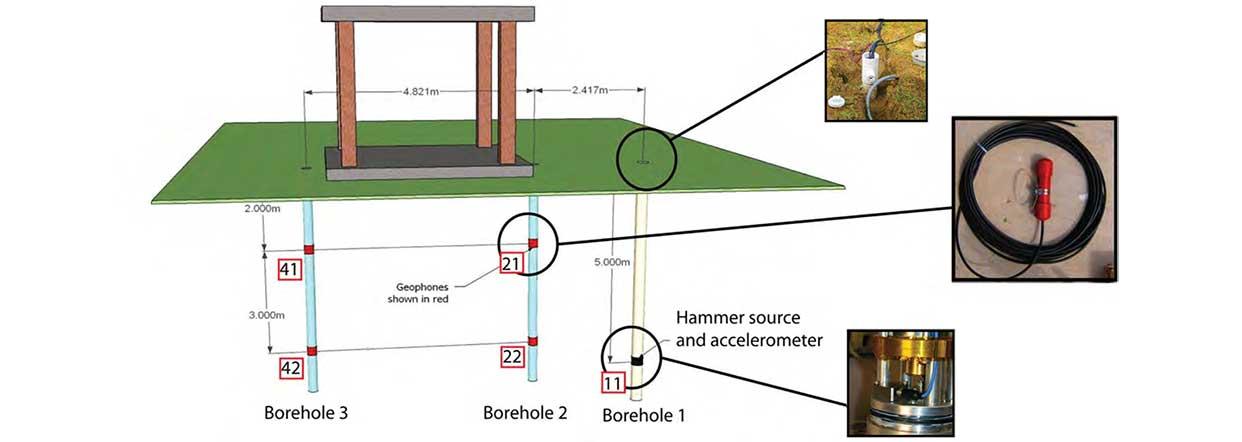
The NEES@UCSB Garner Valley facility was recently enhanced to include a unique cross-hole array experiment. The new permanent cross-hole array includes two geophones and a solenoid-activated dual-direction hammer source at 5 meters depth. A second set of geophones at 2-m depth is deployed directly above the 5-m geophones in the same casings. The system is set to trigger once per week automatically with both upward and downward hammer strikes, thus providing the capability to measure shear-wave velocity on a weekly basis. The system is also programmed to automatically activate the hammer source at shorter time intervals immediately following a large earthquake.
This cross-hole experiment is unique in that these velocity measurements will capture the decrease and recovery of shear wave velocity after a large event, and thus the degradation of shear modulus and its recovery with time at the same soil depth. In combination with the permanent vertical array of accelerometers already deployed at Garner Valley, this new cross-hole experiment will provide a level of detail never before achieved in the observation of dynamic soil behavior during and following large earthquakes.
Cross-hole tests are often used in site characteriza- tion studies to provide in situ estimates of shear wave velocity at a particular depth by measuring the travel time from an active source deployed at
depth in one well casing, to geophones located at the same depth in other well casings. The travel time and the distance between receiver casings are used to estimate the velocity.
As researchers wait for the earth to provide larger motions (an earthquake), the once daily ham- mer strikes are recorded and analyzed for potential temporal changes in velocity with seasons. The shear-wave velocity is determined by cross- correlation of the signals between the geophones of equal depth, separated by 4.82 meters. Initial analysis performing this cross correlation on the 5-meter sensors yielded a shear wave velocity of ~220 m/s. Ten months of daily hammer strikes have been analyzed to determine if seasonal variation of shear-wave velocity exists at the site related to variations in soil saturation and water table depth.

